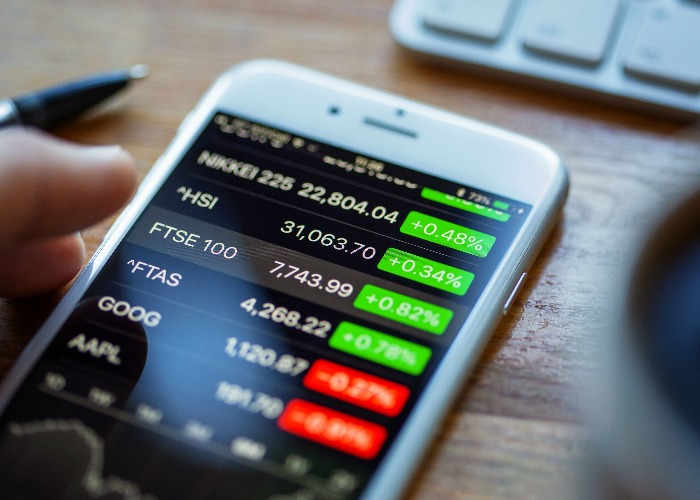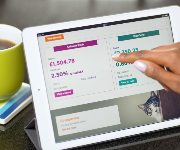How to start investing in stocks, shares, funds and property

New to investing and not really sure where to put your money? We take a look at all your options.
Sections
Why invest?
Cash savings and ISAs are great for people who want easy access to their money
But, if you know you won't need to touch your funds for at least five years, you could earn a better return by investing it in the stock market.
That's because investments generally trump savings over the long term.
The big difference between investing and cash saving is you don’t get a guaranteed interest rate.
Your return depends on whether the investments you choose rise or fall in price.
This means you could get back less money than you put in, but there’s also the possibility you could see much higher returns than if you left your money in cash savings.
The decision about whether to invest therefore ultimately comes down to whether you’re willing to take some risk with your money in pursuit of those potential returns.
This article is part of a wider series on investing, covering all areas from stocks and shares to buy-to-let, peer-to-peer and alternative investments. Click here to view the full guide.
Can you afford to invest?
These days it’s possible for anyone to start investing with as little as £1, but you should still consider whether investing is right for your personal circumstances.
If you have unsecured debts like credit cards and loans you should aim to pay these off first.
Also, it is generally considered good practice to have at least three months of expenses stashed away in cash savings, so ask yourself – ‘do I have money that I can access easily if I need it?’ If the answer is no, you should start a ‘rainy day’ fund first.
As a rule of thumb, you should look to invest for periods of five years or more, but ideally at least 10 years, which makes investing ideal for saving towards life’s big goals.
How to build up an emergency savings fund
What is an ISA?
If you’re thinking of investing and are a UK resident, you should consider an Individual Savings Account (ISA).
ISAs are a tax-efficient way to invest up to £20,000 per year. You won’t pay any tax on the money you earn from investments held within an ISA, so you get to keep more of any returns you make.
This is helpful, because when it comes to investing returns, every penny counts.
An ISA isn’t actually an asset (like a stock) itself. Think of it more like a ‘wrapper’ that you put around an asset. The wrapper is tax-proof, which stops the Government taking a share of any return you make from your asset.
You can use your ISA wrapper on investments like shares, bonds and funds (known as a Stocks and Shares ISA), or on cash savings (Cash ISA). There are also specific ISAs available to help with goals like buying a first home, such as the Lifetime ISA.

Managing investments
Adding to your investment pot monthly can be a great way to help it grow, particularly if you don’t have a big lump sum to start.
Doing this can enable you to benefit from both compound returns (which can really add up over time) and something called ‘Pound Cost Averaging’, which is a tactic experienced investors use to help maximise potential returns.
Instead of just saving what’s left over in your account at the end of the month, treat savings like a monthly outgoing – set up a direct debit to come out around pay day and keep it going. This way you won’t have to think about it and after a while, you won’t even miss it.
Having a goal can really help to keep you focused on the long term and ignore what the markets do on a day to day basis, especially if you’re new to investing and risk.
When and why you should re-assess your investment portfolio
What investments are available?
There are several different types of investment: we’ll start with the most common for beginners:
Shares – do exactly what they say on the tin. They are a share in ownership of a company, such as John Lewis or Tesco. They’re typically considered higher risk investments as the price can go up and down quite quickly.
Bonds – when you buy a bond you’re lending money to a company or the Government (a government bond is called a Gilt) on the agreement that they’ll give it back in the future, hopefully with a bit of interest. There’s little chance of losing your money, but the flip side is you can only expect modest returns.
Cash – an essential part of a healthy portfolio, allowing you to buy investments quickly when opportunities arise.
Funds – a fund is a very convenient way to invest for beginners. It’s a basket full of investments that have been selected by an expert. All you have to do is invest your money into the fund and you instantly hold hundreds or sometimes thousands of individual investments, like shares, bonds, property and others. What’s more, the expert manages your investments on an ongoing basis, making sure the risk balance remains right, so you don’t have to worry.
Property – bricks and mortar. It can include residential and commercial property in the UK and abroad.
Commodities – mainly raw materials like gold or copper, or agricultural produce like corn or coffee that are traded on global financial markets. Prices can swing dramatically, making commodities fairly high-risk investments.
Ethical investment isn't a type of investment by itself, but a broad label that includes many of the above investment types. You can read more about it here.

What could I invest in?
It’s typically considered risky to buy just one investment and pin all your hopes on it.
As a general rule, most experienced investors have a portfolio of investments which vary in risk, from low to high. Often they’ll also be from a number of regions (e.g. US, Europe, Asia) or markets (like the FTSE 100 or S&P 500).
There are no hard-and-fast rules about how many investments make a good portfolio, but the more variety your portfolio contains, the more diverse it is.
The upshot is that if your money is spread out widely, your overall investing returns are less likely to be affected by any one issue, such as a big UK company going into administration, or Wall Street having a bad day.
How risky are your investments? What ‘conservative’, ‘balanced’ and ‘aggressive’ actually mean
Understanding risk
How much risk you take depends very much on you and your circumstances. Here are some things to think about:
Your risk appetite: how comfortable are you with the prospect of losing some of your money? For example, if you invest £1000 and six months later its only worth £800, would it be disappointing, or the end of the world? If it’s the latter, you might prefer to consider lower risk investments.
Your timeline: if you’re planning to invest over a longer period, you may be able to afford to take a little more risk. Over periods of 10 years or more, stock market ups and downs will tend to smooth out – for example, research shows during any 10-year period in the FTSE 100 over the past 35 years, investors had almost a 90% chance of growing their money. However, you can’t rely on past performance to predict what’ll happen next and there’s always a chance your investments could be worth less when you come to sell them.
Your wealth: if you’re investing a large chunk of your savings over a relatively short period, it may not be wise to take high risks, in case things go wrong. On the other hand, if your investing pot is just a small part of your overall savings and investments, and you don’t need it in the near future, you might be happy to take a risk with it to help it grow.
Choosing a ‘risk level’: Most of the ‘do it for you’ online investing services have created a set of risk levels to help you choose one that’s right for you. These are often in the form of a scale from low to high risk and usually include explanations of what each level means in practice.

Getting started
A common route people take is to select and buy their own investments, either through a broker or an online trading platform, like IG.
How you choose what to invest in is up to you – you can do loads of research, pick your favourite brands, or simply pick at random.
If you buy stocks and bonds, you’ll likely pay a trading fee for each one, which can mount up so keep an eye on costs, as they ultimately eat into your returns.
You’ll also need to set a reminder to review your investments regularly, to make sure they’re still right for you.
Alternately, funds are a great way to buy lots of investments at once. In return, you pay an annual fund charge to the fund provider (like Blackrock, iShares or Vanguard).
Funds come in all shapes and sizes – they can contain shares, bonds, property and other less common assets, not just from the UK, but worldwide, giving investors the convenience of a well-balanced portfolio without the hassle.
Or, why not get an expert to invest your money for you? It’s really easy and quick via a digital wealth management service or online investment offering.
Simply answer a few questions, like how much you want to invest and how much risk you want to take and you can be up and running in minutes.
The fees will be slightly higher than buying your own funds directly, but you’ll get an expert picking your investments for you and managing them every day to keep them on track.
You can check how your investments are performing, 24/7 via PC or the app and see where your money the .
You can even withdraw your money with a few clicks if you need to.
The information included in this article does not constitute regulated financial advice. You should seek independent, professional financial advice before making any investment decision.
Most Recent
Comments
Be the first to comment
Do you want to comment on this article? You need to be signed in for this feature








